Photos courtesy of Catja Christensen ’23
Two weeks, four cities, seven dancers, countless memories. From Mar. 12-27, Professor of Dance Shani Collins brought senior dancers Hisa Amaya, Sophie Barr, Catja Christensen (myself), Ilesia Finch, Zion Martin-Hayes, and Yeseri Vizcaino on a dance intensive and cultural immersion TRIPS course. The Department, along with assistance from the Office of Study Away and Africana Studies, fully funded the trip.
Collins and Truth Hunter, former Director of Race and Ethnicity programs at Conn and current doctoral student at the University of Connecticut, have collaborated over the years on holistic, embodied means of learning and brought students to Senegal and Ghana before. In their course syllabus, they describe their belief that “West African dance is not only a form of performing arts but is also a pathway for understanding the culture of marginalized peoples, challenging stereotypes about African peoples, and using movement as a healing modality.”
Prior to departure, the course embraced Collins and Hunter’s holistic, multidisciplinary praxis. We read “Homegoing” by Ghanaian-American author Yaa Gyasi, a novel which follows multiple generations of families from Ghana to America and back again. We practiced Twi, a dialect of the Akan language spoken in southern and central Ghana, and worked with language tutor Manasseh Anku via Zoom. We conditioned our bodies to prepare for dancing for hours in the hot humidity of West Africa, formed our own community values, scheduled Yellow Fever vaccine appointments, and completed our tourist visa applications together. By the time of the trip, we had already established a deep communal trust and bond, which would prove invaluable for the intensely emotional and transformative trip to come.
ABURI (Mar. 13-14)
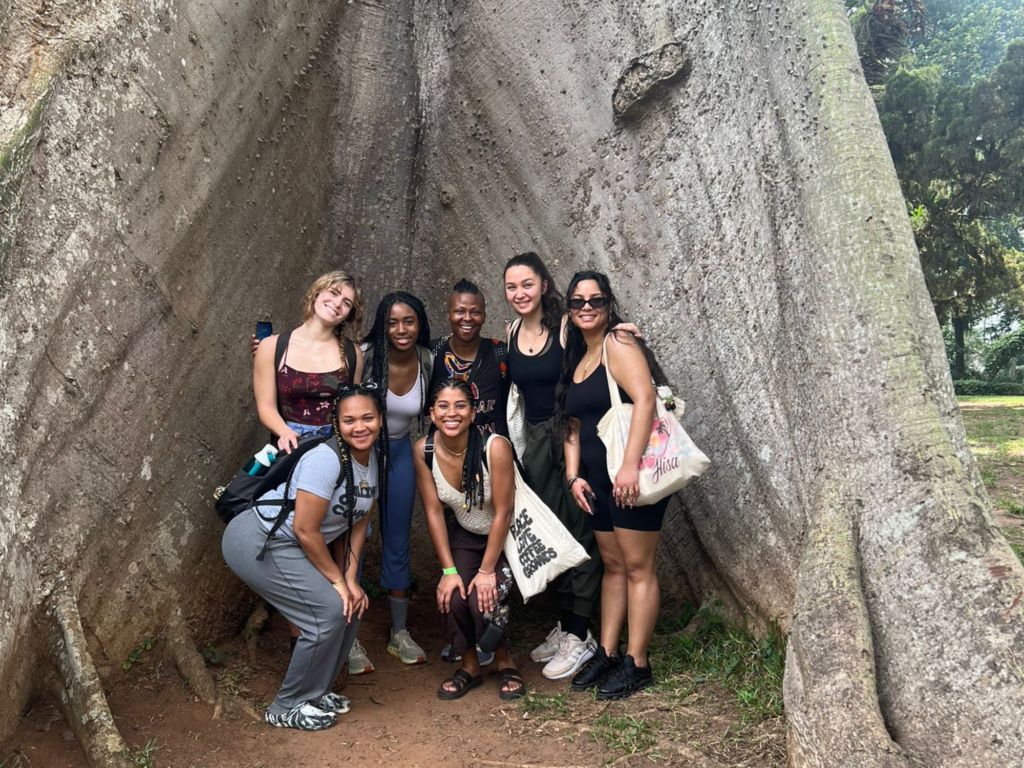
After a 10-hour direct flight from New York City to Accra, we stepped out into the beating 85° sunshine. It was a stark contrast from the chilly, windy Connecticut weather we left behind. We drove outside of Accra to our hotel in the mountains of Aburi. We were glued to the windows, looking at the abundant tropical plants, the food and water bottles perched on top of vendors’ heads, and the typical Accra traffic, all the while jamming out to Afrobeats on the radio.
After a Twi lesson and breakfast with Anku at our hotel, where we learned “maakye/good morning” and “medaase/thank you,” we set off on our first adventure to the Aburi Botanical Gardens. Our guide showed us all of the medicinal plants, monkey pod trees, kapok trees with massive buttress roots, and cinnamon trees which we sniffed and even tasted.
Our first dance experience was at Ashesi University, a leading liberal arts institution in West Africa where Collins taught while on sabbatical from Conn during the 2021-22 academic year. After meeting administrators, walking around the stunning campus, and trying the delicious dining hall food, we made our way to an airy multipurpose room with floor-to-ceiling windows and learned the sinte dance from Collins. We saw the sunset behind the mountains on one side and the lights of Accra twinkling like stars on the other.
KUMASI (Mar. 15-18)
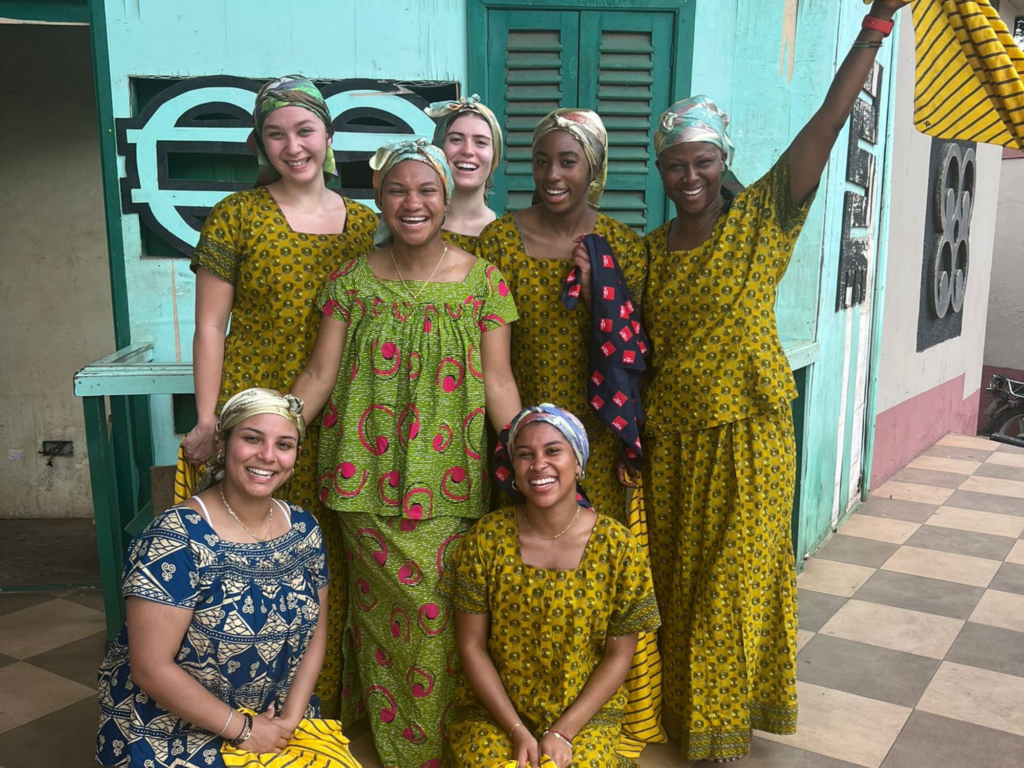
Next stop: 5 hours northwest to Kumasi. We stopped by Nana Yaa Asantewaa’s sacred grounds and shrine in Ejisu, learning from the guide about how the Queen Mother and warrior led the Asante, an Akan ethnic group, in the War of the Golden Stool against the British. We followed her story to the Armed Forces Museum in the city, where she was held captive before being exiled to the Seychelles. We also learned about the Asante Kingdom when we visited the Royal Manhyia Palace Museum.
Simultaneously, we spent two intensive days training with the Centre for National Culture’s resident dancers. We were paired up with company members, who became our beloved mentors in just two days. We danced on an outdoor stage in 95° sunshine and meticulously practiced footwork, arm placement, and formations for the kete and sanga dances. On our last day, the company dressed us in traditional costumes — layers of cloth wrapped around our bodies and scarves and golden trim wrapped around our heads.
I danced with company dancer Abena, my name twin since we were both women born on Tuesdays. We learned about this Ghanaian naming tradition at our naming ceremony in Kyekyewere “KY” Village the next day, when the chief gifted us with unique names with individual meanings and welcomed us to the village in a beautiful, emotional ceremony. We wore kente cloth from our trip coordinator, hilarious guide, and unofficial girl dad Richard Dwomoh’s shop in Bonwire.
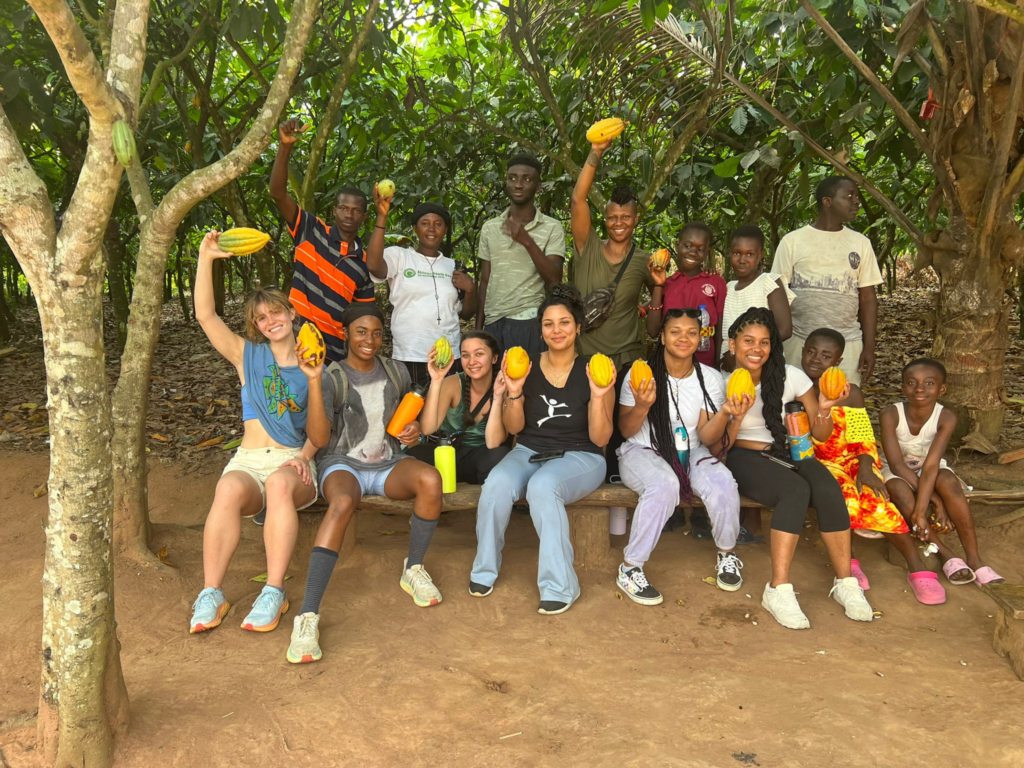
To round out our time in Kumasi, we hiked a mountain to a cocoa farm, where we learned that fresh cacao tastes surprisingly like mangos. We visited the school Dwomoh’s son attends, where we traded dances with the students and shared our gifts. We learned about Adinkra symbols at a workshop then ended our visit with a five-hour-long impromptu dance party with dozens of children as Finch and Vizcaino had their hair braided.
CAPE COAST – ACCRA (Mar 19-26)
On the drive from Kumasi, we visited the Assin Manso ancestral site, where enslaved West Africans had their last bath before walking 50km to the slave castles on the coast. The gorgeous ocean views were punctuated by looming white buildings: Elmina and Cape Coast Castles. We toured both, walking from slave dungeons with a lingering, nauseating smell to the church just upstairs to the governor’s airy bedroom. It was a tour of extreme contrasts: the memory of human suffering with the lives that continue in the surrounding city. Our guide led us out of the “Door of No Return,” the same exit that enslaved people would walk through to board waiting ships. However, on the other side, the entrance was labeled “Door of Return,” symbolizing the return of African descendants in the diaspora to the continent.
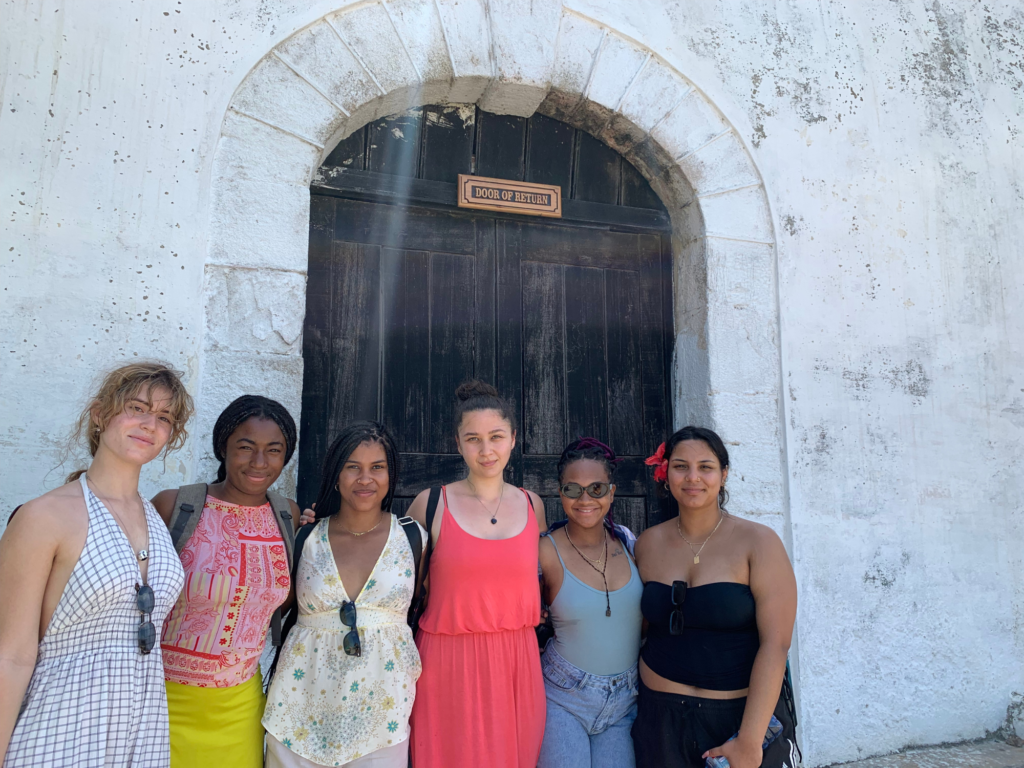
After many beach days, we drove back to Accra, our final destination. We visited Dede Sartorial to be measured and fitted for custom costumes that we will wear on May 8 in Myers Studio when we present our research. We also practiced our Twi and bartering skills with street vendors under Dwomoh’s watchful, playful gaze. When we would get too distracted by all the waist beads, dresses, and artwork, he would call out, “Y3n kɔ! Let’s go!” We would parrot the phrase back to the amusement of the local vendors.
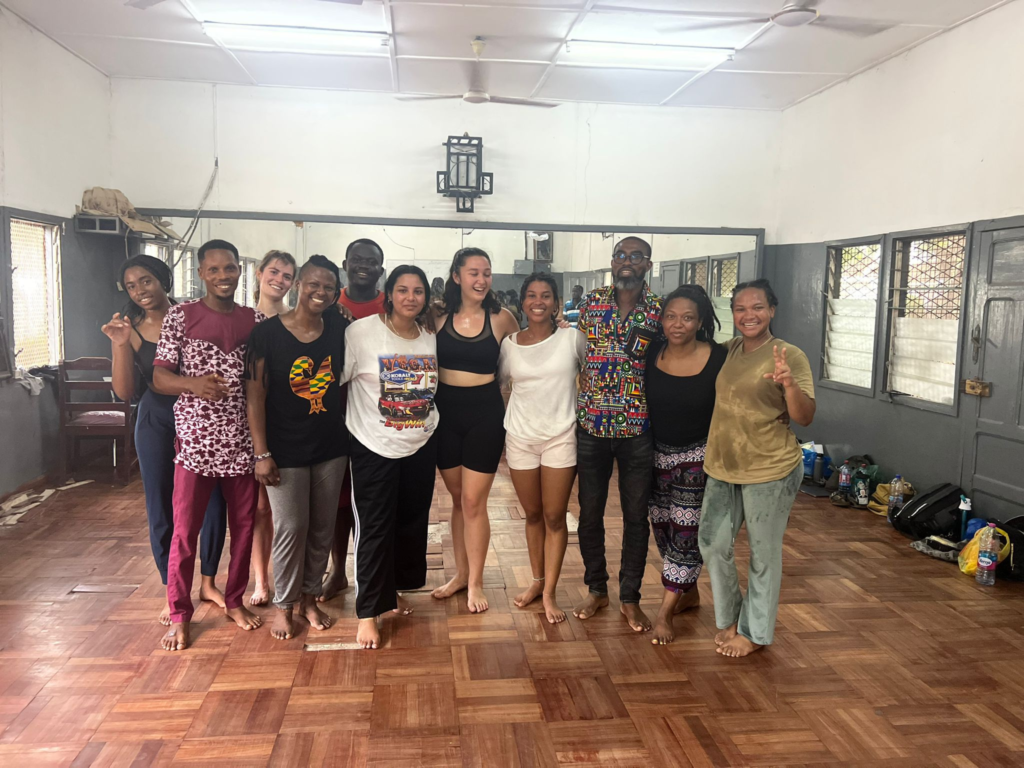
We danced day and night in Accra, from jamming in the University of Ghana studio to getting down with the nightlife around the city. We learned the dances gota, kpanlogo, and bima along with Collins’ original choreography, and when we attended a private show of the Zadonu Dance Company, we jumped up from our seats and joined the dancing when we recognized the gota drumbeat.
JFK AIRPORT/NEW LONDON (Mar. 27)
Back stateside, we felt like changed women. We were now more of a sisterhood than simply classmates, forever bonded by this life-changing journey. We affectionately called Collins “Auntie Shani” on our trip, as she helped us learn how to be strong and vulnerable, fierce and soft, supportive and supported.
For some of us, going to Ghana was a symbolic return to ancestral grounds, connecting with a history that is equally painful and beautiful. This trip also allowed us to see firsthand how West African history and culture impact the world, historically and presently. We all brought our diverse individual identities to the experience, making our course both personally and collectively transformative.
Medaase Shani, Truth, Richard, and everyone who guided us on this adventure. As an artist told us in Kumasi, “If you love Ghana, Ghana will love you.” We cannot wait to return!

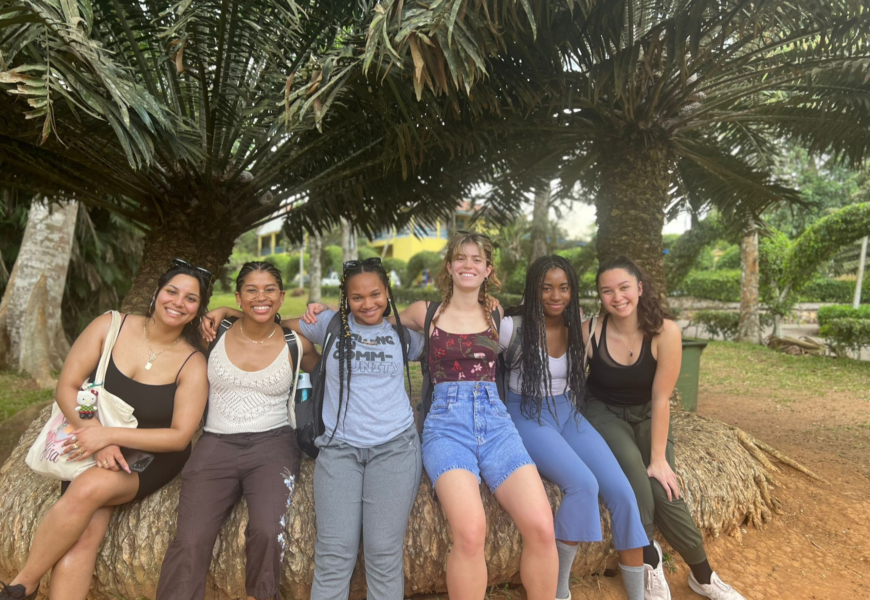








[…] Source link […]